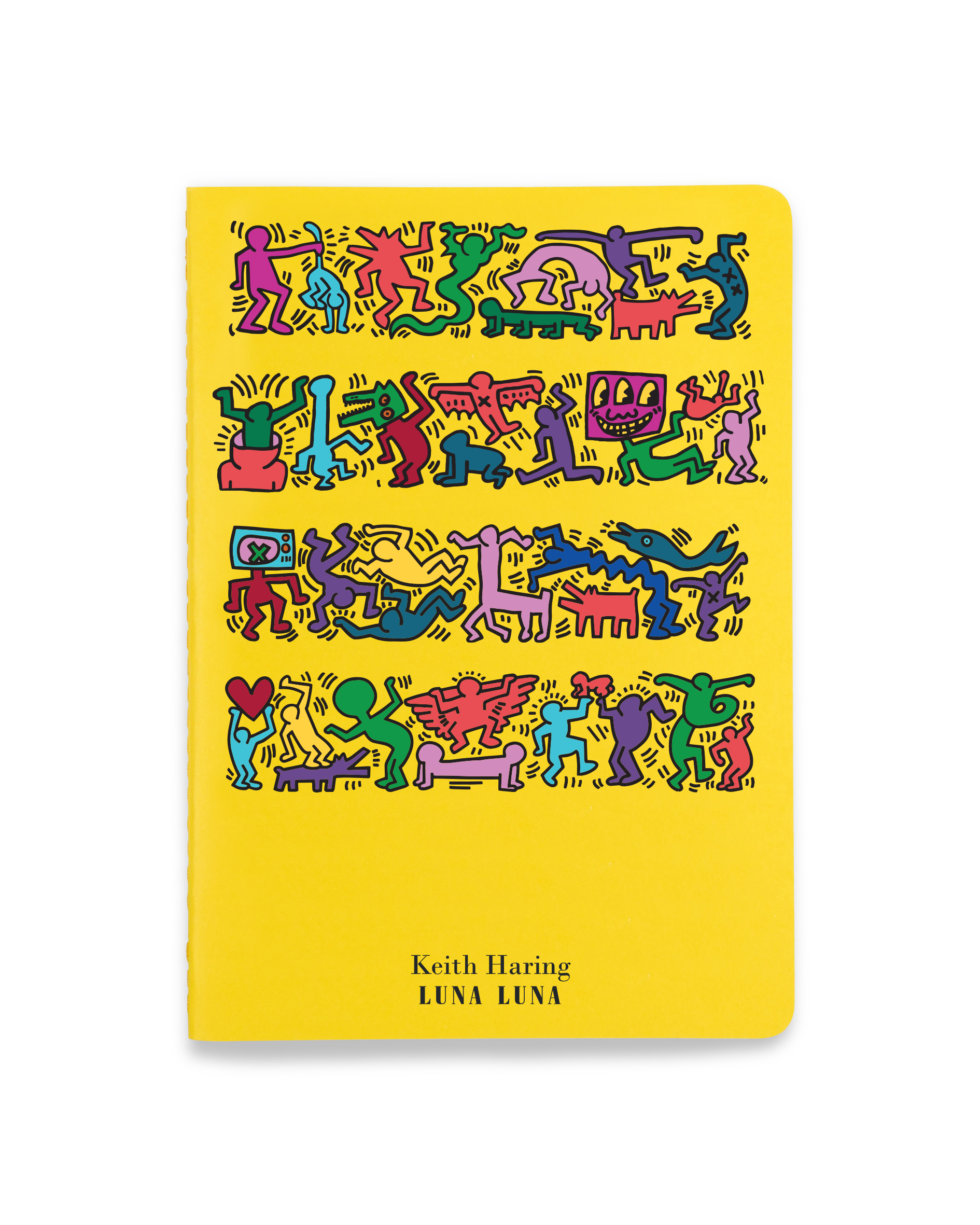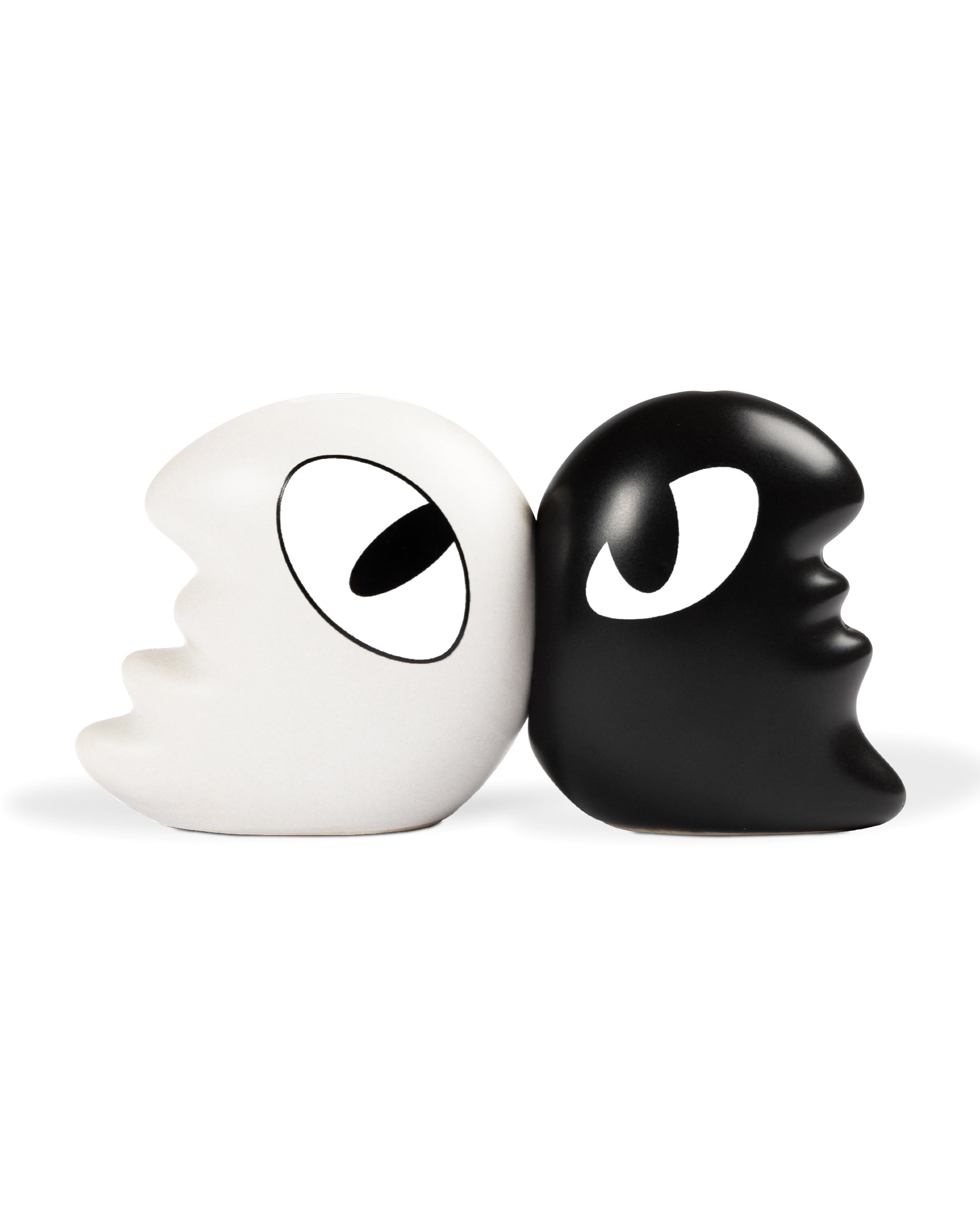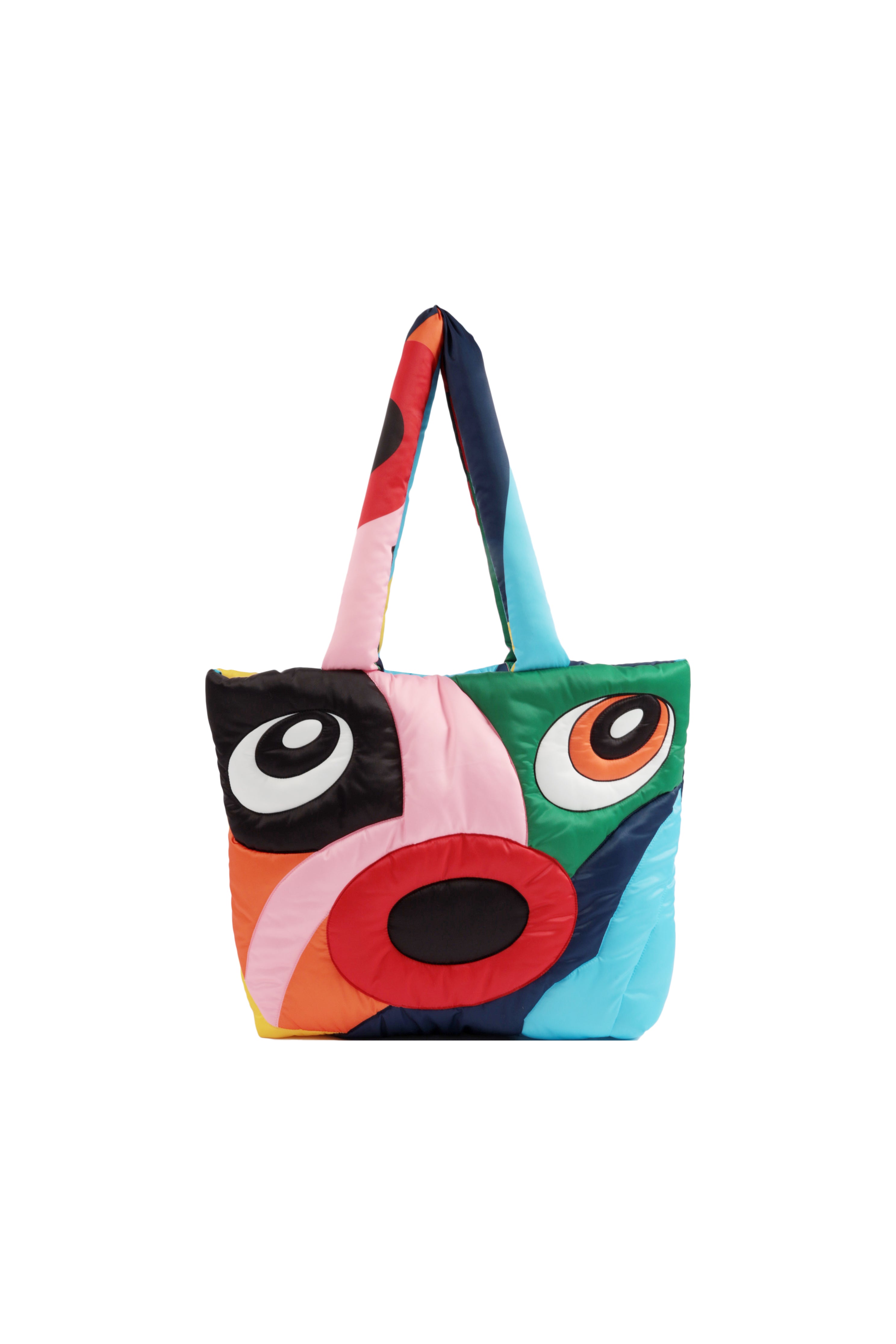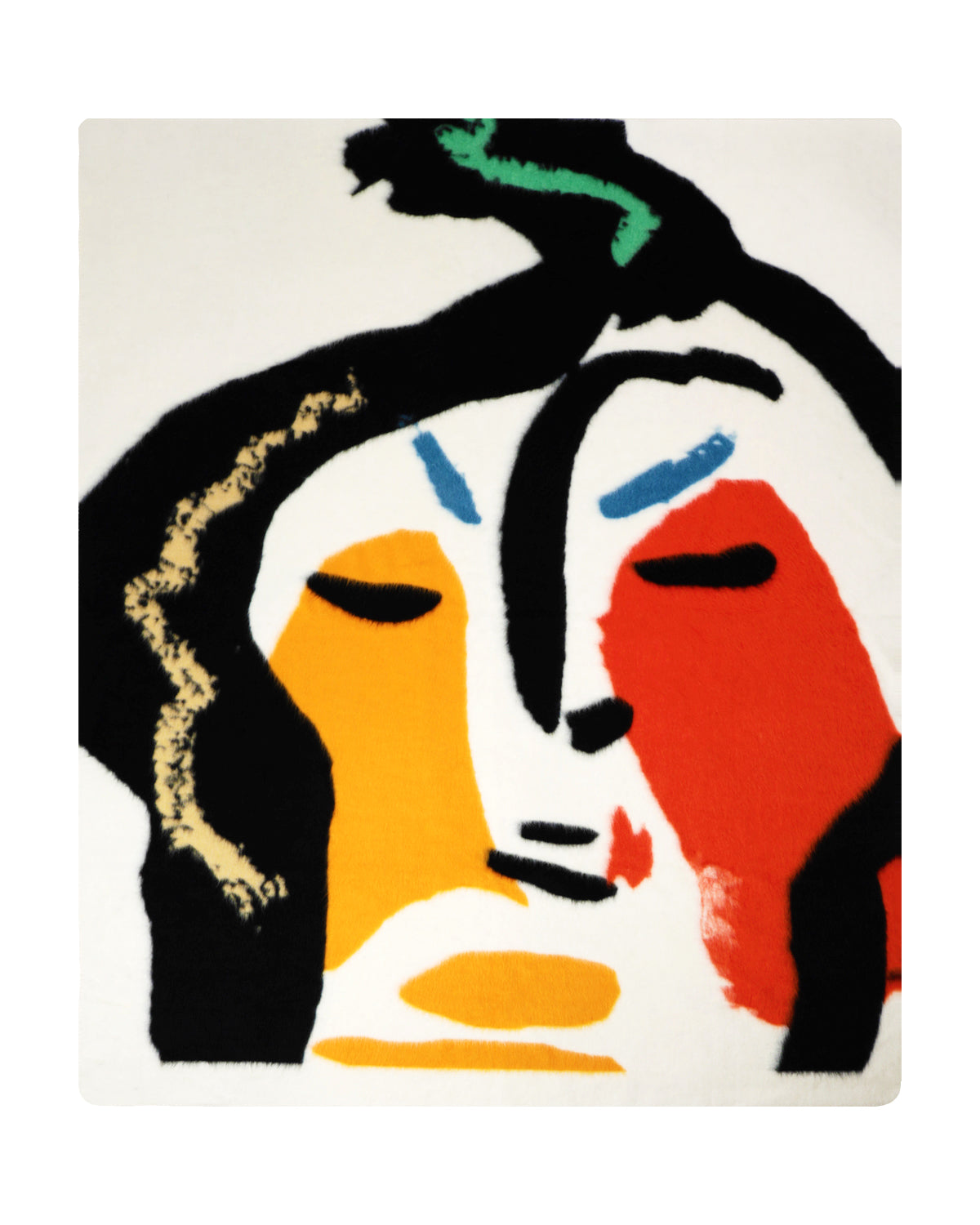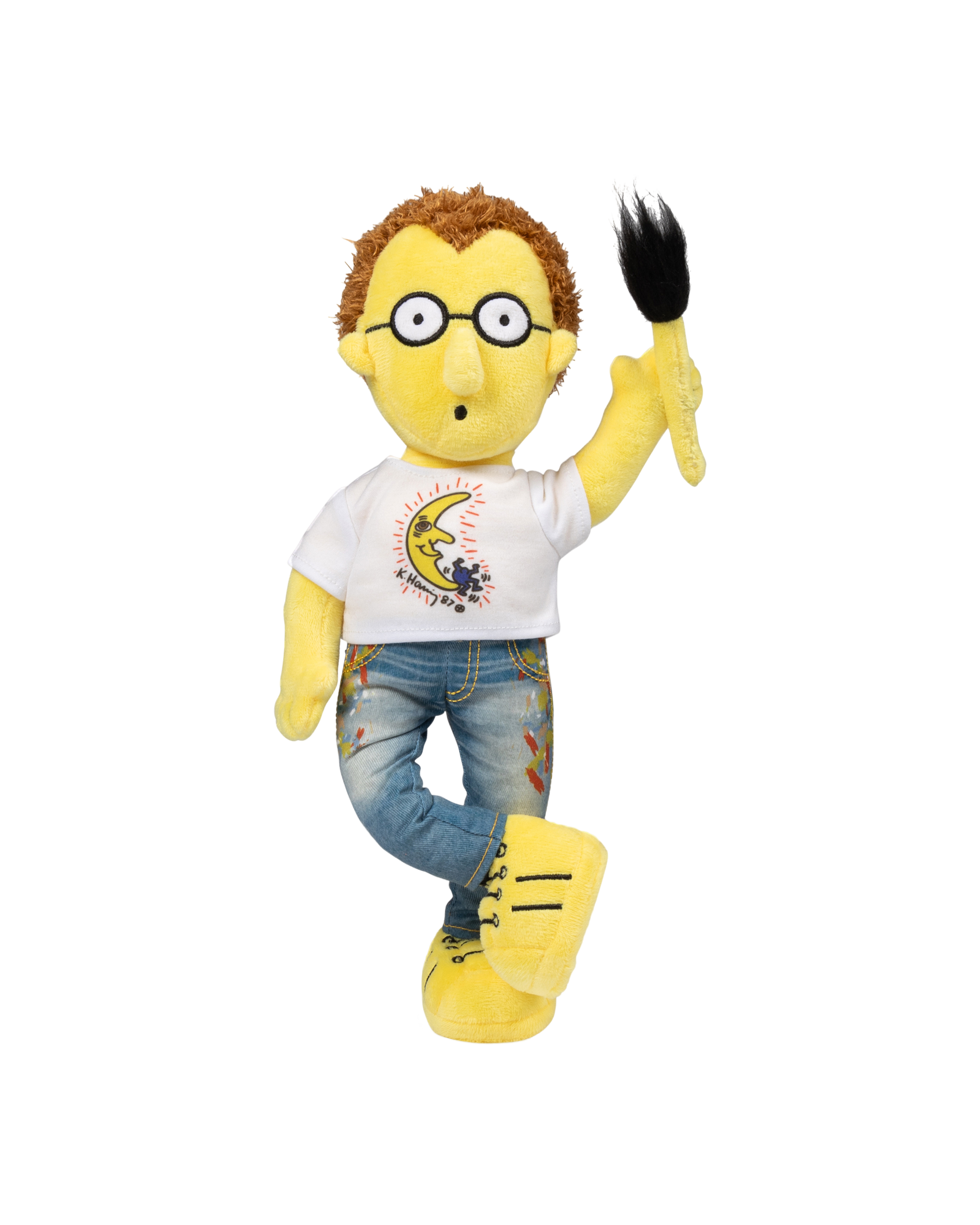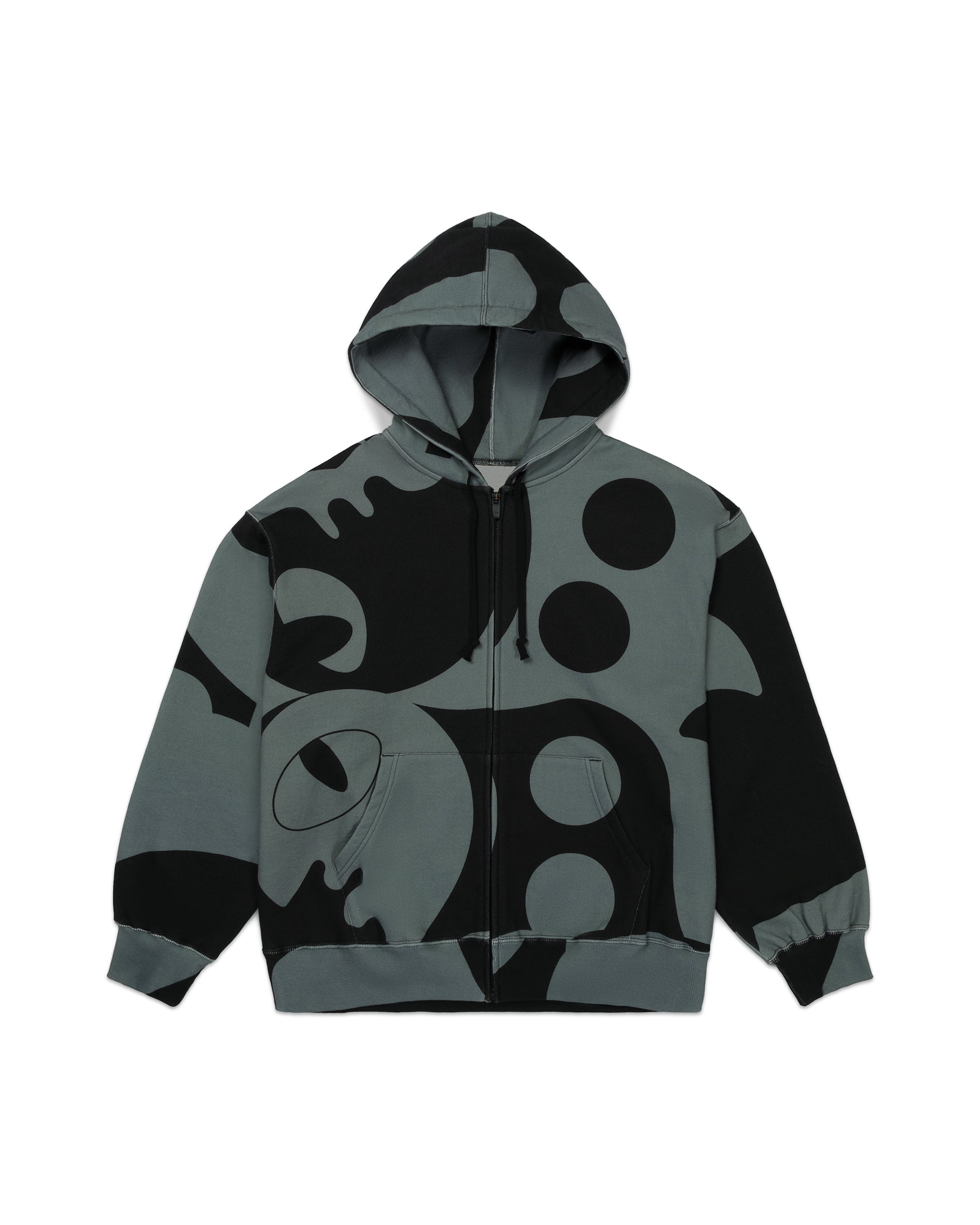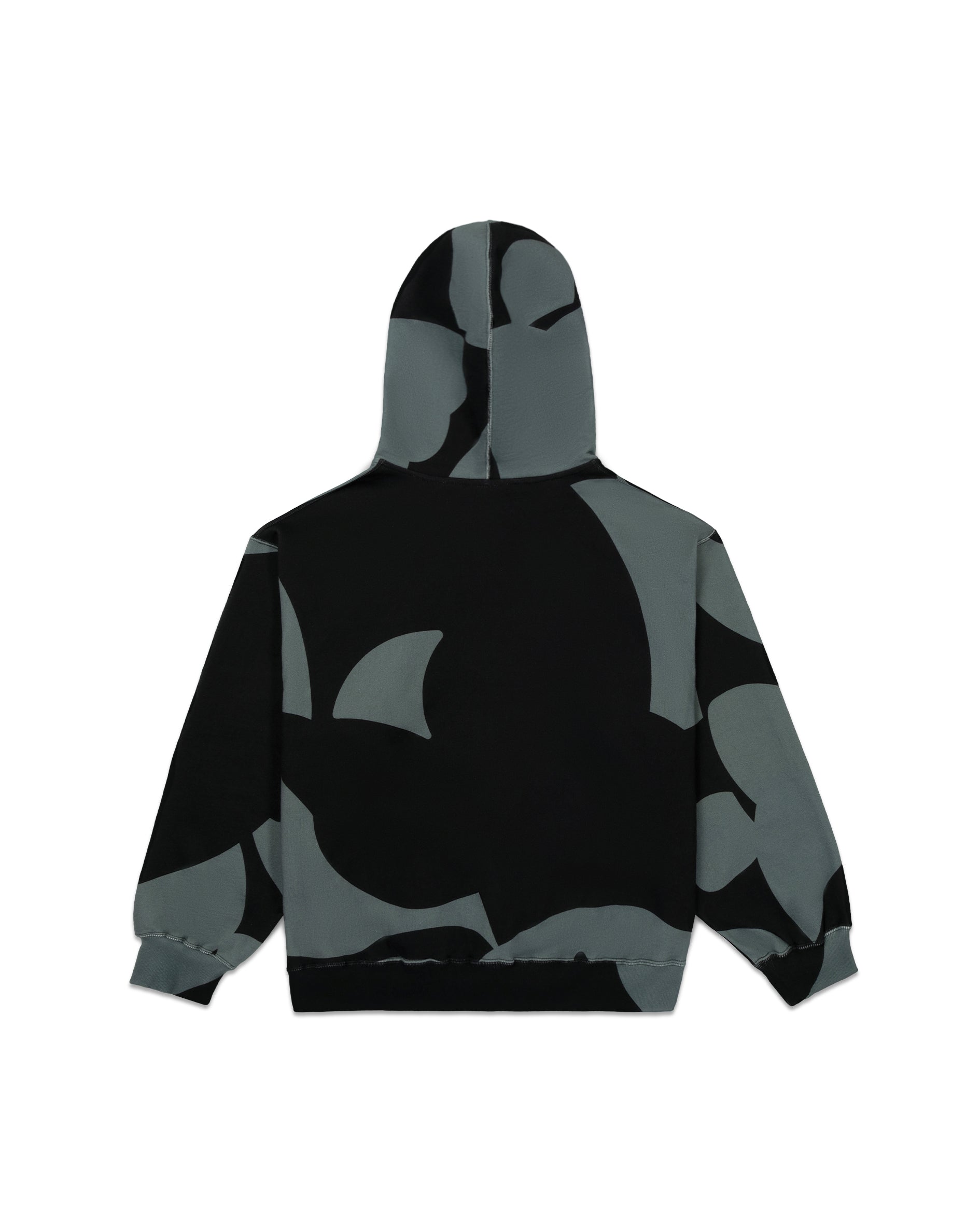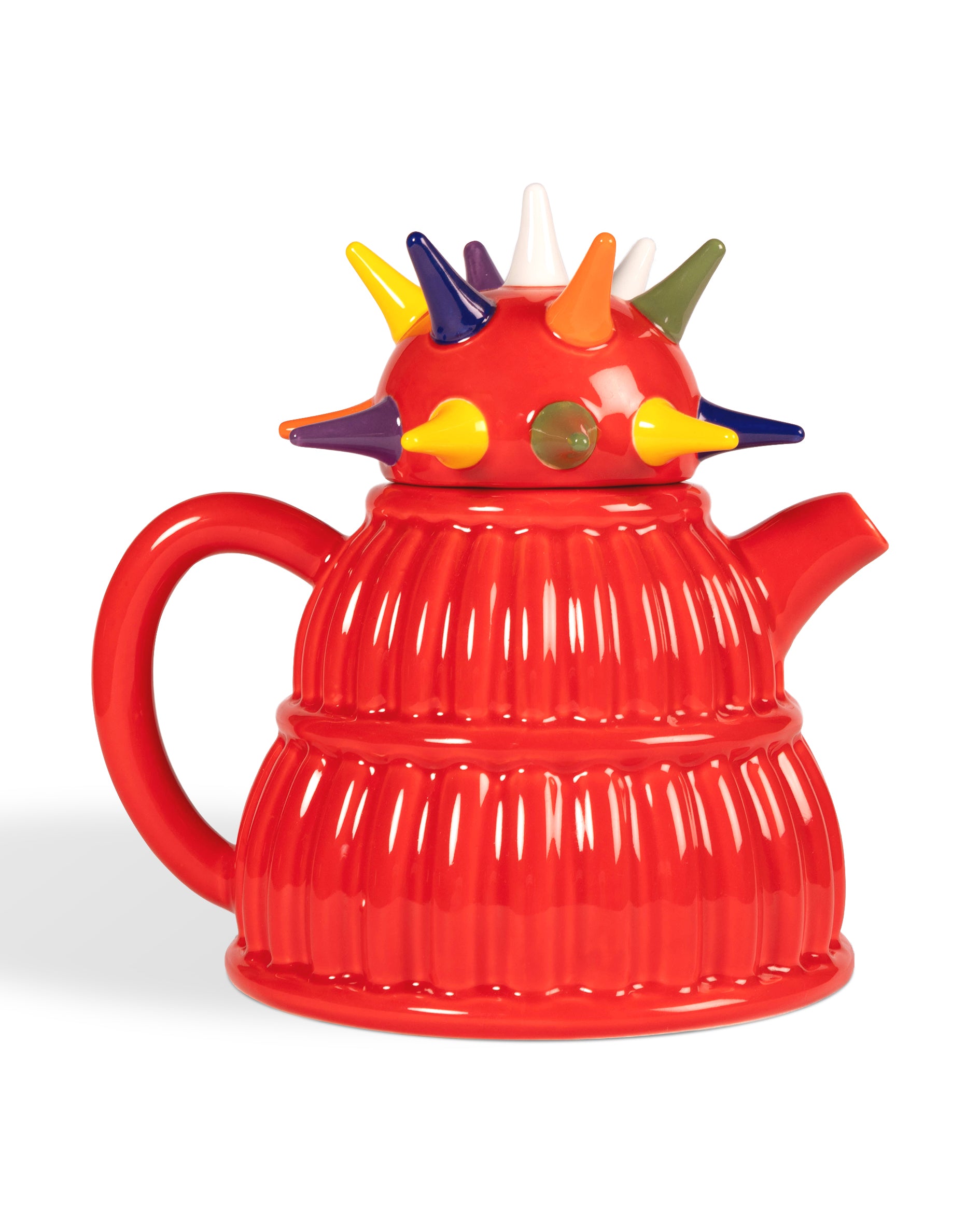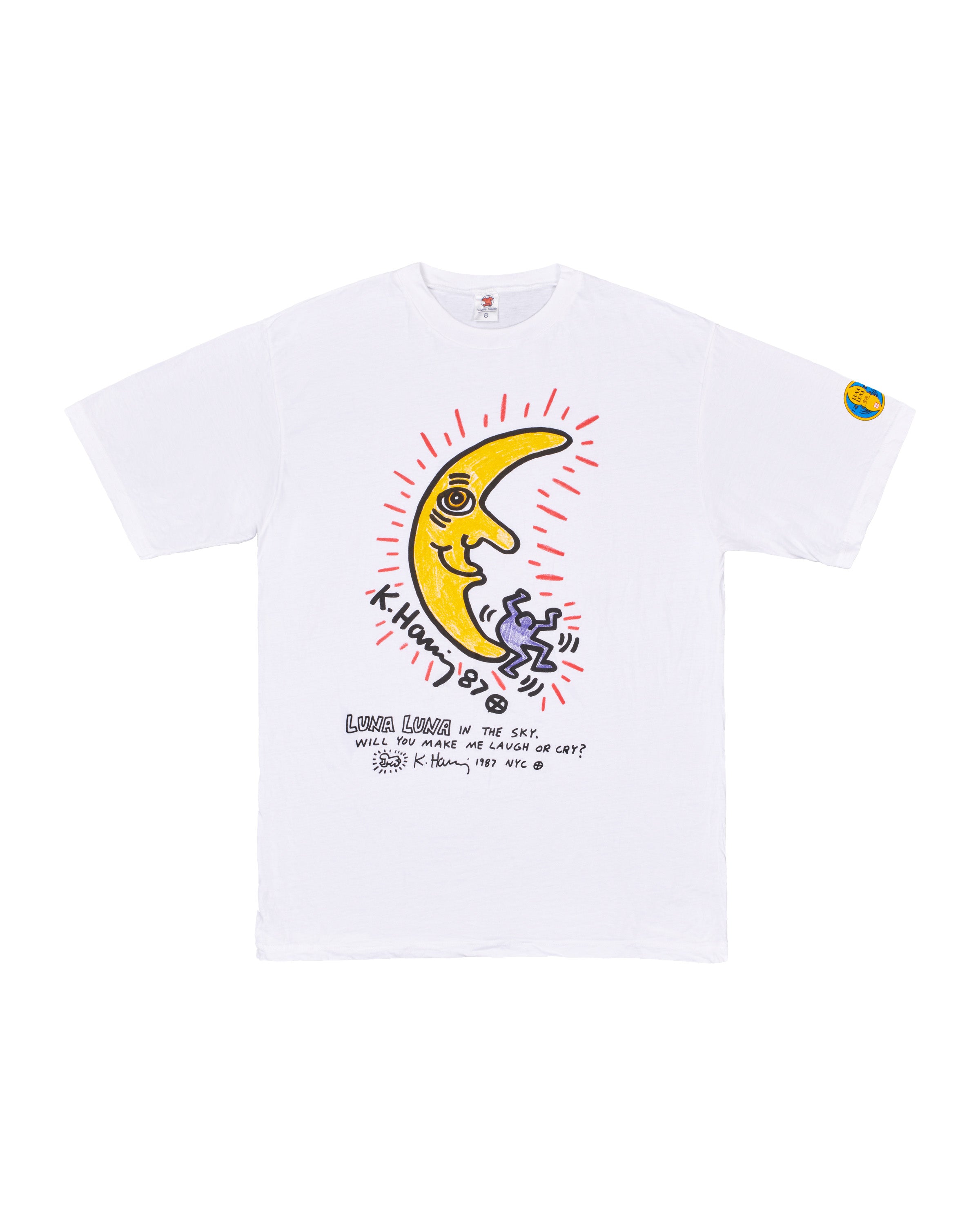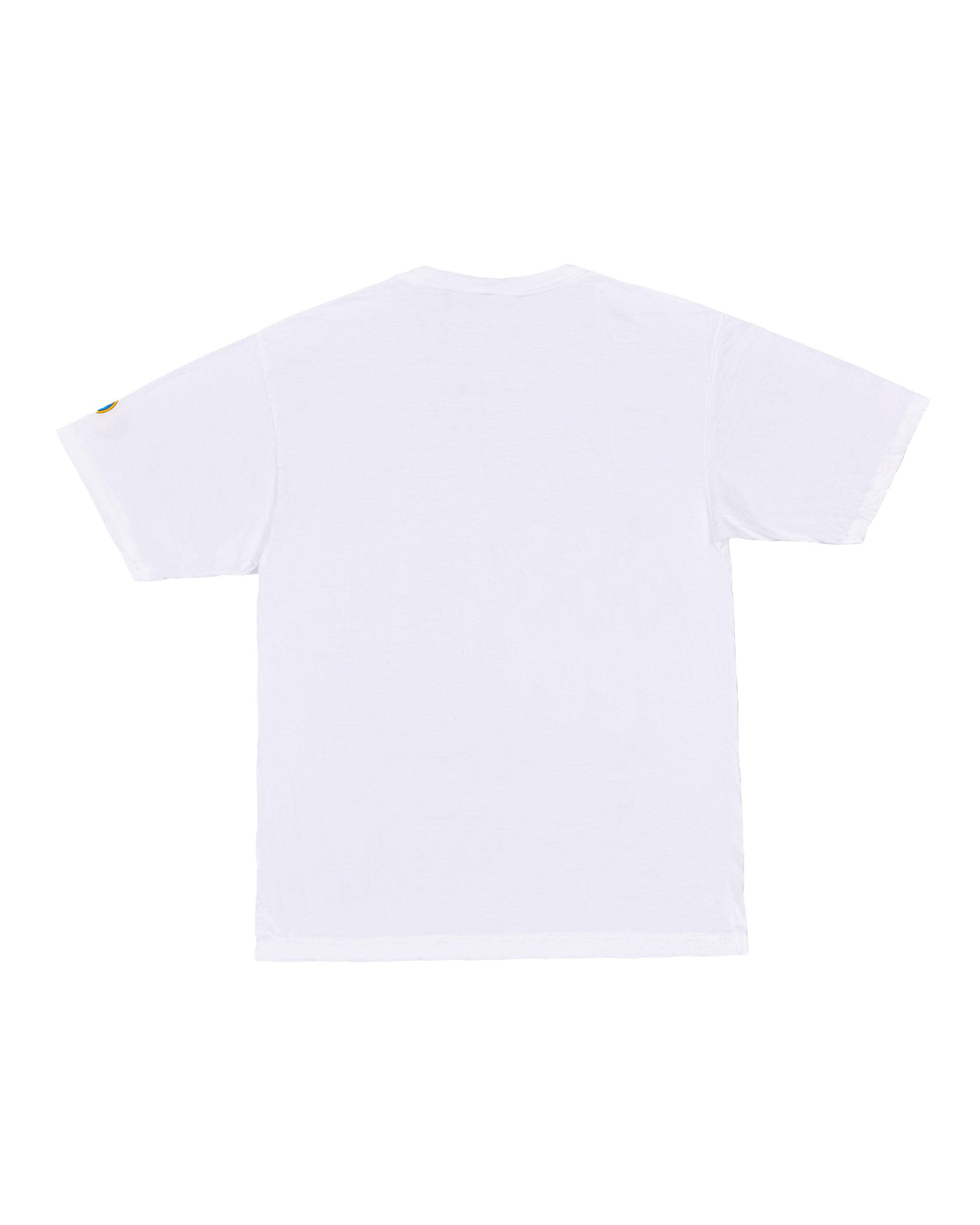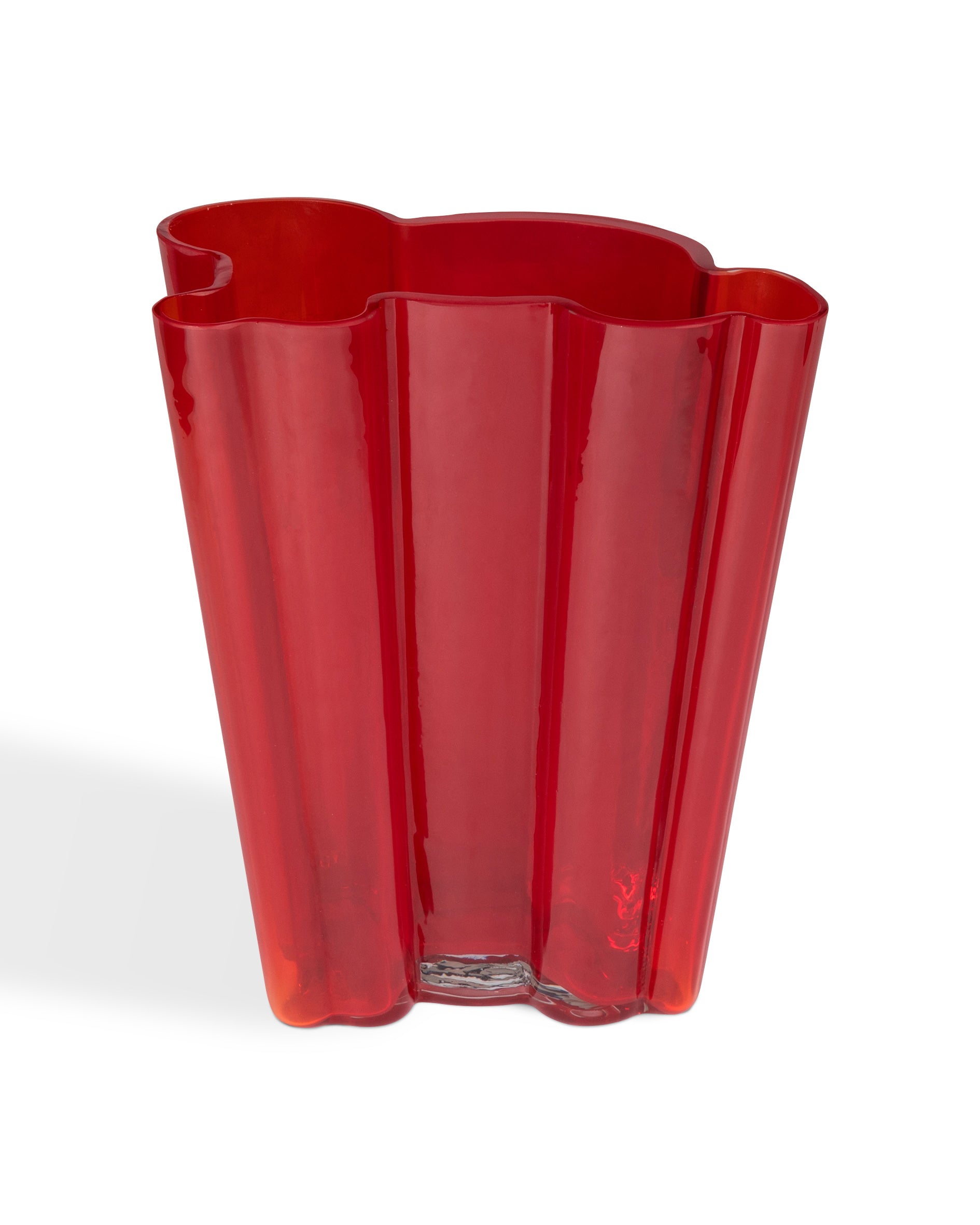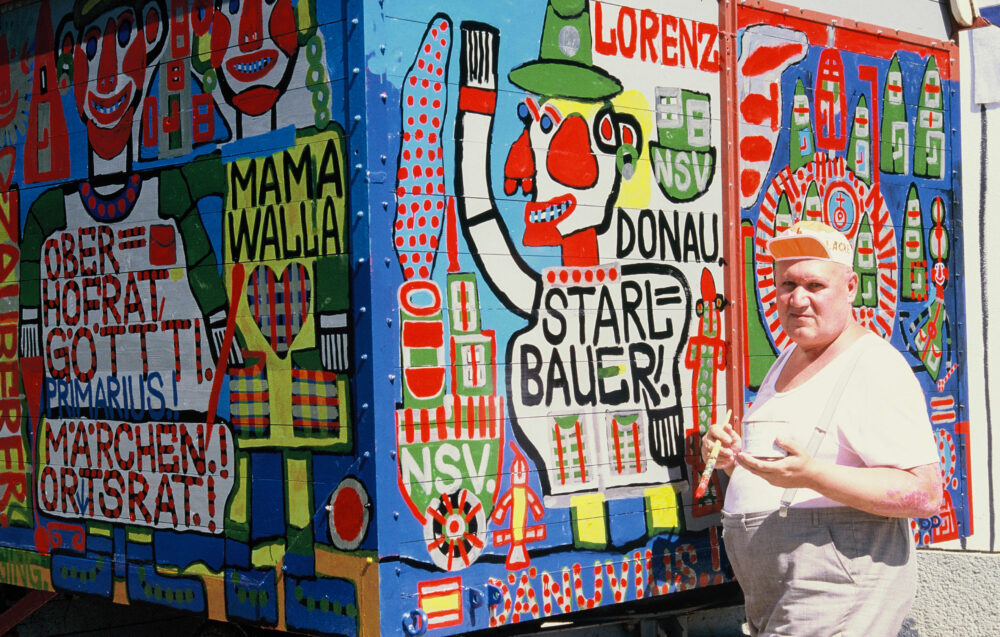
August Walla.
August Walla was one of postwar Austria’s most prolific and mystifying artists. Walla’s brightly colored figurative paintings and installations that blend symbols and text have established him as a leading figure of Art Brut—a term coined by artist Jean Dubuffet to refer to naïve-appearing work made by self-taught artists outside the academic tradition of fine art.
Walla’s work was deeply informed by both his autobiography and symbols drawn from politics, popular culture, and religion. Walla’s mother raised him as a girl hoping to stop him from being enlisted in the army; later on, Walla consistently questioned and explored gender, using inverted swastikas as an emblem of femininity and the hammer and sickle as an emblem of masculinity.
The hand-painted circus wagon that August Walla made for Luna Luna bears the hallmark of what he called his Welltallendefremdsprache (“Universe-End-Land”)...
After being diagnosed with schizophrenia as a teenager, Walla moved in and out of the Maria Gugging Psychiatric Clinic, then known as the Mental Health and Care Facility at Gugging, on the outskirts of Vienna. In 1986, he became a resident of what came to be known as the House of Artists, founded by clinic psychiatrist Leo Navratil. Walla’s room there was the hub of his wildly original creative universe; he covered the walls with figures, symbols, and mysterious phrases, creating a ritualistic space akin to a nondenominational chapel.
The hand-painted circus wagon that August Walla made for Luna Luna bears the hallmarks of what he called his Weltallende (“Universe-End-Land”), a mythology and universe created by Walla featuring its own language, emblems and symbols. Walla’s distinctive imagery, including figures with exaggerated bodily features, phrases, crosses, moons, fish, bullets, and potent symbols like a hammer and sickle and swastikas, cover the wooden carriage, all painted in the primary colors typical of Walla’s mythical-magical universe.

